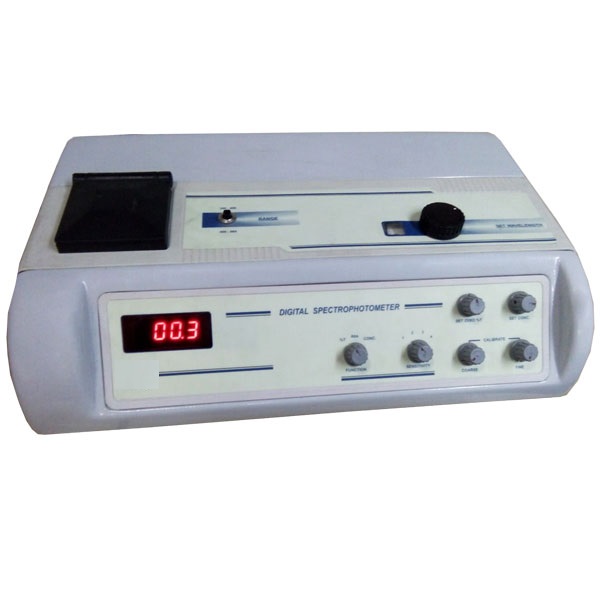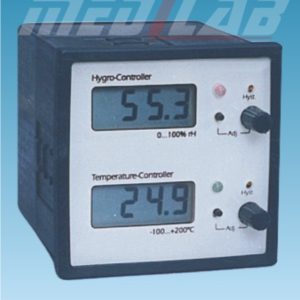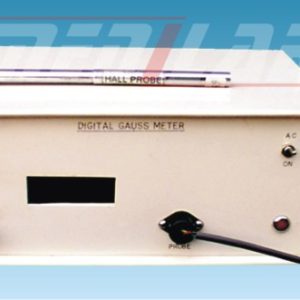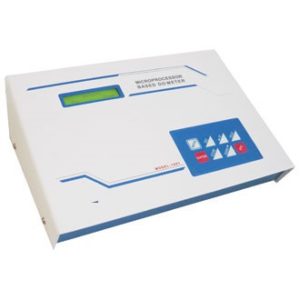Description
A digital spectrophotometer is an instrument used to measure the intensity of light absorbed or transmitted by a sample at different wavelengths. It is a highly sensitive and precise instrument that can measure the absorption or transmission spectrum of a substance in a solution.
The instrument consists of a light source, a monochromator, a sample holder, a detector, and a microprocessor-controlled system. The light source emits a beam of light that is directed through the monochromator, which separates the light into its component wavelengths. The sample holder contains the sample, and the detector measures the intensity of the light that is transmitted through or absorbed by the sample.
The microprocessor-controlled system uses calibration factors and algorithms to calculate the absorbance or transmittance of the sample at different wavelengths. The resulting data is typically displayed on a digital screen or computer interface and can be used to determine the concentration of the substance in the solution.
Digital spectrophotometers are commonly used in research laboratories, medical clinics, and industrial settings to measure the concentration of a wide range of substances, including proteins, nucleic acids, and drugs. They are also used to measure the purity of a sample, as well as to study the kinetics of chemical reactions.
The advantages of using a digital spectrophotometer include its ability to provide precise and accurate measurements, its automation of the measurement process, and its ability to handle a wide range of sample types. It is also faster and more efficient than traditional methods of spectrophotometry, such as using a filter-based system.







